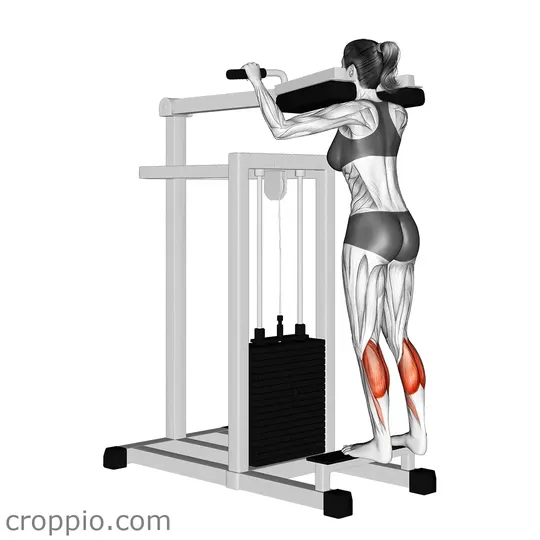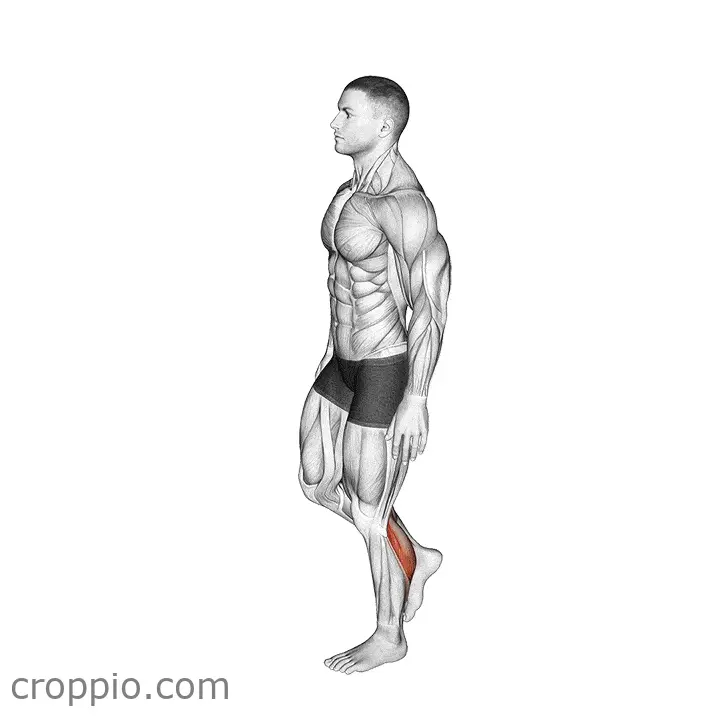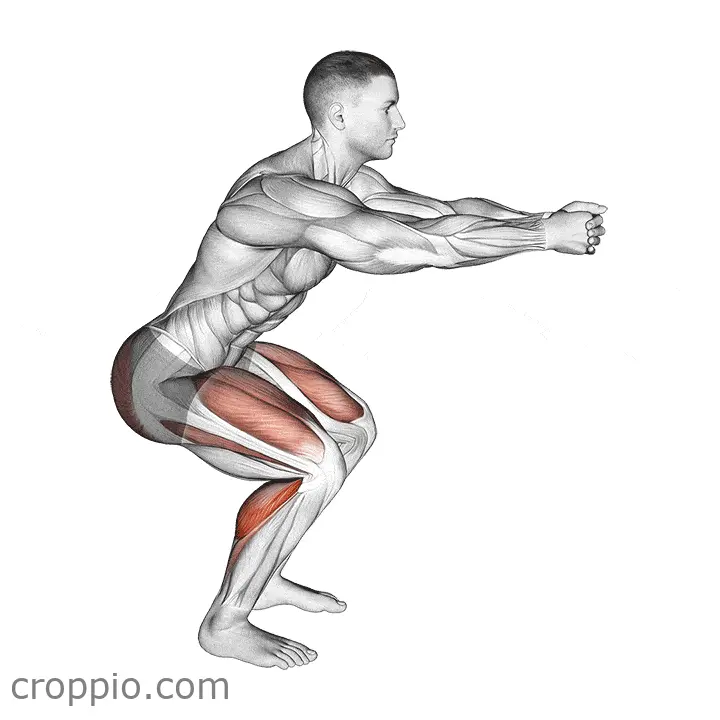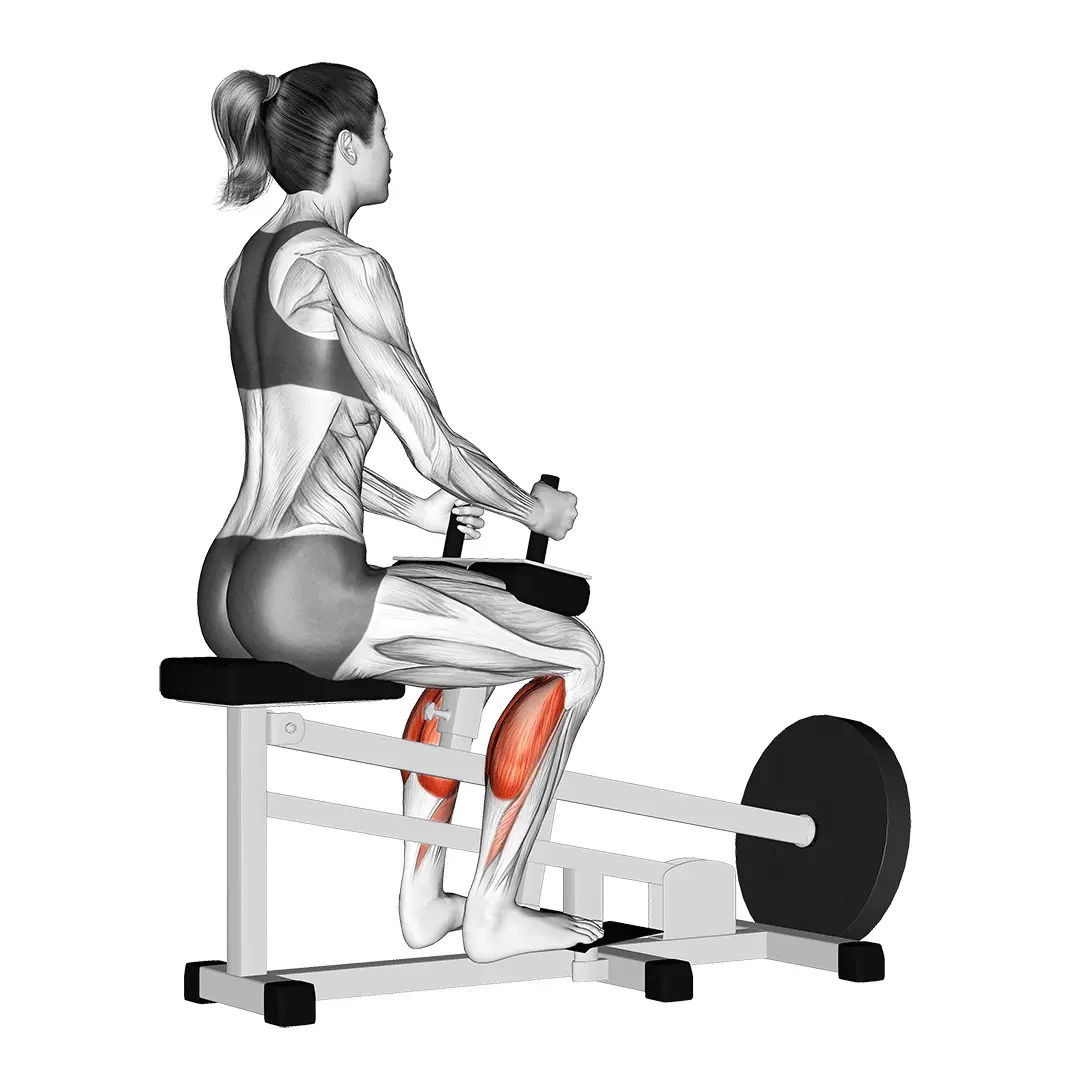Standing Calf Raise

Muscles Involved
The standing calf raise primarily targets the gastrocnemius and soleus muscles, which are crucial components of the calf musculature. The gastrocnemius is the larger and more visible muscle, contributing to the bulk of the calf and is responsible for plantar flexion at the ankle joint. The soleus lies beneath the gastrocnemius and plays a significant role in stability and endurance during prolonged activities. Secondary muscles involved include the tibialis posterior and the flexor hallucis longus, both of which assist in ankle stabilization and movement.
Top Mistakes
- Insufficient Range of Motion: Many individuals fail to fully stretch and contract their calves, limiting effectiveness.
- Locked Knees: Keeping your knees locked can strain the joints and reduce calf engagement; a slight bend is necessary.
- Rushing the Movement: Performing the exercise too quickly diminishes control and increases risk of injury.
- Uneven Weight Distribution: Leaning too far forward or backward disrupts balance and can lead to improper form.
Execution Tips
- Start Position: Stand upright with feet shoulder-width apart, either on flat ground or on a raised surface like a step.
- Foot Placement: Ensure your toes point straight forward or slightly outward for optimal muscle engagement.
- Controlled Movement: Begin by lifting your heels off the ground slowly, keeping your weight centered through the balls of your feet.
- Full Contraction: Hold the top position briefly for a complete contraction before lowering your heels back down slowly.
- Breathe: Inhale while lifting your heels and exhale as you lower them—maintaining a rhythm enhances performance.
Workouts
The standing calf raise can be seamlessly integrated into various workout routines. A general recommendation includes:
- Sets and Reps: Aim for 3-4 sets of 12-20 repetitions, focusing on maintaining form rather than rushing through numbers.
- Frequency: Incorporate calf raises 2-3 times a week as part of your leg or lower body workouts for balanced development.
- Complementary Exercises: Pair with exercises like squats, lunges, and leg presses to ensure comprehensive lower body strength.
Conclusion
The standing calf raise is an effective exercise for strengthening the calves, enhancing lower body stability, and improving overall athletic performance. By focusing on proper execution and avoiding common mistakes, individuals can develop well-defined calves, promote better balance, and reduce the risk of injury in daily activities and sports. With consistent practice, the standing calf raise not only contributes to aesthetic goals but also supports functional movement patterns that are essential for various physical endeavors.



